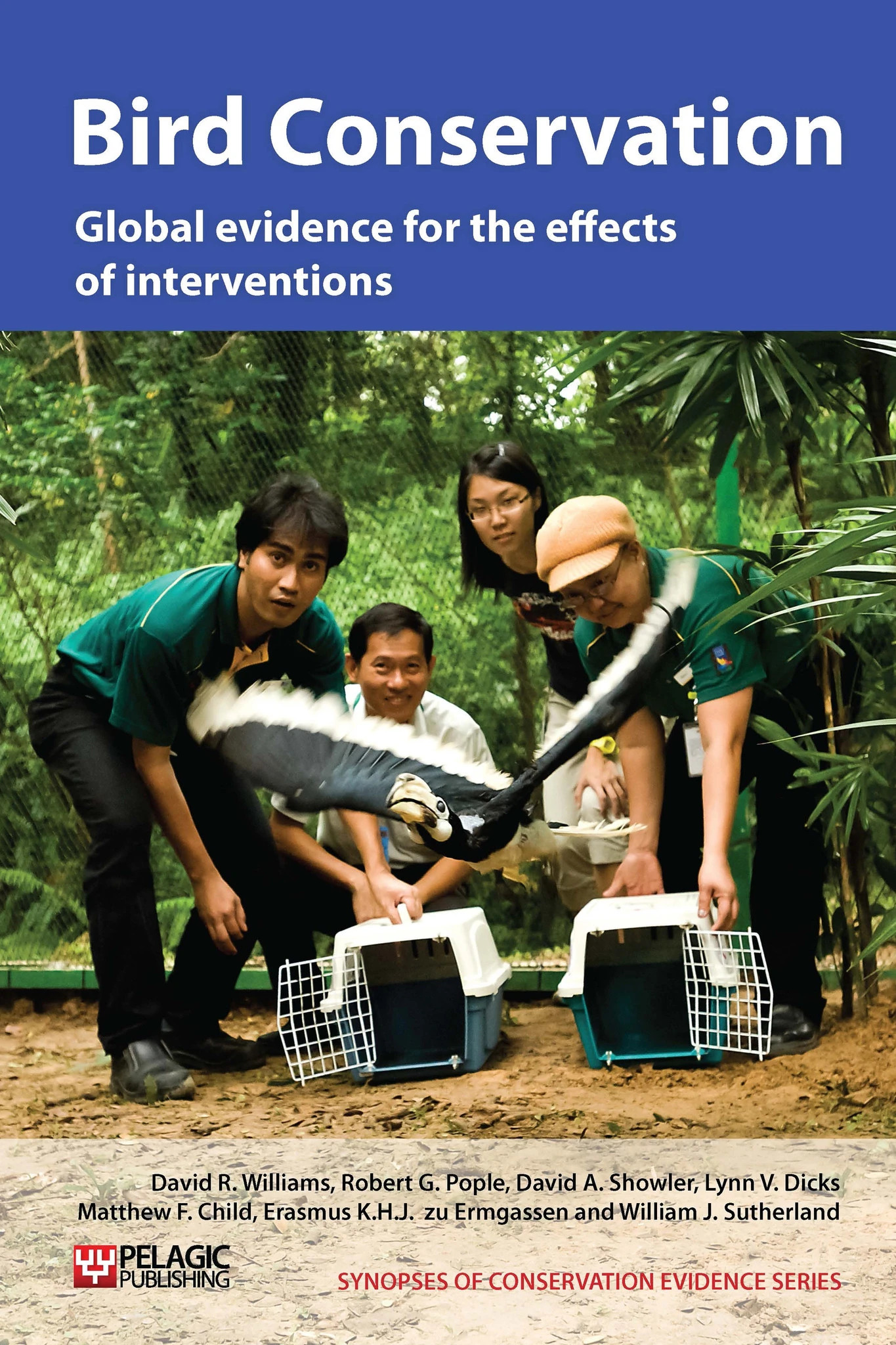Control or remove habitat-altering mammals
-
Overall effectiveness category Likely to be beneficial
-
Number of studies: 5
View assessment score
Hide assessment score
How is the evidence assessed?
-
Effectiveness
61% -
Certainty
41% -
Harms
0%
Study locations
Supporting evidence from individual studies
A before-and-after study on Ilhéu da Praia, Azores, Portugal (Pitta Groz & Pereira 2005), found that the breeding populations of common terns Sterna hirundo and roseate terns S. dougallii increased significantly from 1997 (approximately 100 pairs of common and fewer than ten pairs of roseate terns) to 2002 (641 pairs of common and 133 pairs of roseate terns), following the eradication of European rabbits Oryctolagus cuniculus in 1997 by brodifacoum poisoning. Common tern populations initially increased to approximately 950 pairs in 2000, before falling again.
Study and other actions testedA controlled before-and-after study on Santiago Island (585 km2), Galapagos, Ecuador (Donlan et al. 2007) found that densities of Galapagos rails Laterallus spilonotus increased following the eradication of feral mammals (including habitat-altering species) between 1998 and 2006. This study is discussed in ‘Control mammalian predators on islands’.
Study and other actions testedA before-and-after study on Cabbage Tree Island, southeast Australia (Priddel & Carlile 2007) found that the population of Gould’s petrel Pterodroma leucoptera leucoptera has increased since the eradication of European rabbits Oryctolagus cuniculus in the austral winter of 1997, with more breeding pairs (186-599 pairs in 1989-97, before rabbit eradication vs. 818–1025 pairs in 1997-2006, after eradication), higher breeding success (17–59% success, average of 33% vs. 46–57%, average of 51%) and more fledglings produced (31-331 fledglings/year vs. 374-488 fledglings/year). Rabbit removal (by sequential epidemics of myxomatosis, rabbit haemorrhagic disease and brodifacoum application) was, however, only one of several conservation interventions and the conservation of Gould’s petrels is also discussed in ‘Provide artificial nesting sites’, ‘Provide supplementary food’, ‘Translocate individuals’, ‘Artificially incubate and hand-rear birds in captivity’, ‘Remove problematic vegetation’ and ‘Control avian predators on islands’.
Study and other actions testedA before-and-after study on Selvagem Grande (2.45 km2), Madeira Archipelago, Portugal (Zino et al. 2008), found that the breeding success and productivity of Cory’s shearwaters Calonectris diomedia borealis was significantly higher in 2002-6 (54-56% of 2,075 nests producing fledglings), following the eradication of European rabbits Oryctolagus cuniculus and house mice Mus musculus (a potential predator) than in 13 years during 1982-2001, before eradication (36-45% of 4,952 nests producing fledglings). Eradications were simultaneous, through the application of brodifacoum in July-September 2002 and it was not, therefore, possible to determine which species was constraining the shearwater population. The authors argue that because of the timing of the eradications and the instantaneous impact on productivity, the two species must have been impacting on chick, rather than egg survival.
Study and other actions testedA before-and-after study on Praia Islet (12 ha), off Graciosa, Azores, Portugal (Bried et al. 2009), found that the breeding populations of common terns Sterna hiundo, roseate terns S. dougallii and Madeiran storm petrel Oceanodroma castro increased dramatically following the eradication of European rabbits Oryctolagus cuniculus in 1997, subsequent habitat restoration (see ‘Restore shrubland’ for details) and the provision of artificial nest sites on the island from 1996 (tern boxes) and 2000 (petrel boxes) (see ‘Provide artificial nesting sites’ for details). Common terns increased from no pairs in 1996 to over 1,000 pairs in 2006; roseate terns from zero before 2000 to over 400 pairs; storm petrels from no pairs before 2000 to almost 800 breeding pairs in 2006. Rabbits were eradicated using brodifacoum bait stations and broadcasting pellets.
Study and other actions tested
Where has this evidence come from?
List of journals searched by synopsis
All the journals searched for all synopses
This Action forms part of the Action Synopsis:
Bird Conservation
Bird Conservation - Published 2013
Bird Synopsis





)_2023.JPG)














